Roenis Elias Fun Fact(s)
Funny thing about standards. If Felix Hernandez were pitching like Roenis Elias, we’d be like, oh man, what’s the matter with Felix? This isn’t like good Felix at all. We’d be extremely disappointed. But Felix isn’t pitching like Roenis Elias; Roenis Elias is pitching like Roenis Elias, and he’s the opposite of a disappointment, since just a couple months ago almost literally nobody knew who he was. We want the great talents to be great players, particularly when there’s a track record. But we also like when lesser talents prove themselves worthwhile, even if they aren’t stars. Not everyone can be a star, and every team needs quality role players around the core. Elias has been something of a very modest sensation.
In the beginning, we all had to learn the basics. What’s his fastball like? What’s his breaking ball like? How do you say his name? Are you sure he’s a real player? Elias was an unknown in camp and just out of it, and so we had to learn him from scratch. But now he’s kind of established himself, and he’s thrown 50 innings. We’re getting to know Elias in finer detail, and I wanted to make note of some of those details right here, in case you’ve missed them.
This is about arm angles and on-the-fly situational adjustments. In camp, we learned that the Mariners had worked with Elias on finding more consistent release points and angles. Used to be, he’d throw from anywhere, saying it’s what Cubans do. The Mariners tightened him up, and Elias sensed his stuff got a little better. But Elias does still use multiple slots. I’ll put the images after the jump. Recently the broadcast has started to notice what Elias has been doing, but it’s an easy thing to miss if you’ve just been watching casually.
Where should we start? How about Texas Leaguers? First, Elias’ release points when pitching to right-handed batters:
Now, Elias’ release points when pitching to left-handed batters:
There are two things there. It seems, at first glance, like there’s one thing there, but believe me, there are two, and now I will state what they are! Against lefties, Elias will drop down, especially when he’s throwing a breaking ball. So he’ll throw to lefties from two slots. But there’s also a shift horizontally. Elias situationally changes his position on the rubber. Screenshots will be of assistance. These are taken from Elias’ most recent start, in Minnesota.
Facing a righty:
Elias is in the middle of the rubber. Facing a lefty:
Now Elias is on the extreme first-base side. Facing the same lefty in the same at-bat:
Elias is on the extreme first-base side, and he’s dropped down, almost sidearm but not quite. This was a breaking ball, and Joe Mauer swung and missed. You’ll see it in a little bit.
It’s basically about platoon splits. Against righties, Elias wants to give himself a better angle. And he doesn’t throw the drop-down breaking ball because that would move more laterally right into the wheelhouse. Against lefties, Elias creates the illusion of releasing the ball behind the hitters’ backs, especially when he drops his angle. Righties already see the fastball, the curveball, and the changeup. Lefties don’t see the changeup, but they do basically see two different breaking balls, even though they’re just different varieties of the same curve. One of them has more drop, and one of them runs away similar to a sweeping slider. When Elias drops down, he looks almost like a lefty specialist.
And he isn’t a specialist, because he can get righties out, too. For the record, it’s important that Elias occasionally throws a fastball from the lower angle, just so hitters can’t predict what’s coming right away. If Elias only ever dropped down to throw a breaking ball, the opposition would pick up on that, as Elias would be tipping his pitches. But he keeps them honest with drop-down fastballs, and he mixes in higher-slot curves.
Here’s what the three breaking balls look like. The standard curve against righties:
The higher curve against lefties:
The lower curve against lefties:
It’s fascinating to look at Elias’ PITCHf/x numbers, split by handedness. Against righties, Elias’ curve averages vertical movement below -8. Against lefties, however, the curve averages vertical movement just below -3, with more lateral break. This is because of the different arm angle, and the take-home message is that lefties, on average, see a breaking ball with five fewer inches of drop than righties do. Of course, lefties technically see two different versions of the same pitch, one with more drop and one with more run. I’m certain this isn’t unprecedented, but it is unusual. Roenis Elias throws a fastball, a curveball, and a changeup, but in reality he’s more complicated than that. His curveball can be two different pitches, and Elias is fully aware of that. He’s even more interesting than I could’ve imagined.
It’s too soon to say how well all of this works, and will continue to work. Elias definitely doesn’t have ace upside, and people still question his command, and he hasn’t yet gone around the league. Maybe it would help him to be more consistent with everything, so he can be maximally consistent with his mechanics. I have no idea. I only just started thinking about Roenis Elias within the past two months. There’s a lot left to figure out. But Elias pitches like he’s really thought about how he wants to pitch. He pitches creatively, and he pitches creatively with good stuff instead of lefty slop. He’s taken a three-pitch repertoire, and he’s looked for additional little edges, and where we are now is that we have a Roenis Elias and he’s not even a problem. He’s been solid. Completely out of nowhere. He could go all season long.
The most interesting thing about Roenis Elias is his life story to date. We don’t know very much about it. All we can analyze is his pitching, and it turns out that’s pretty interesting too.

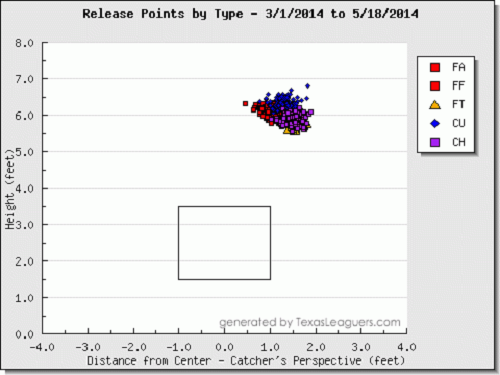
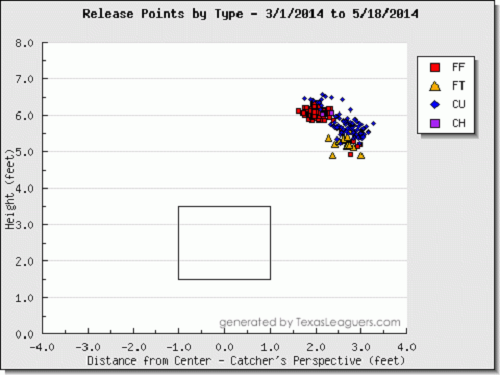
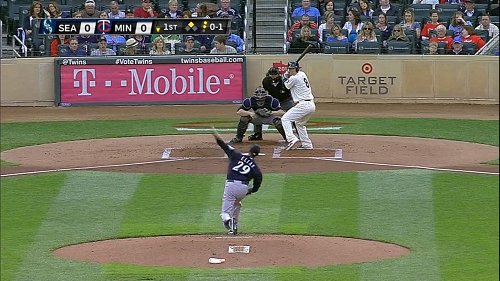
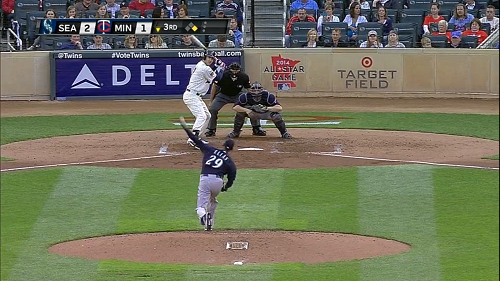
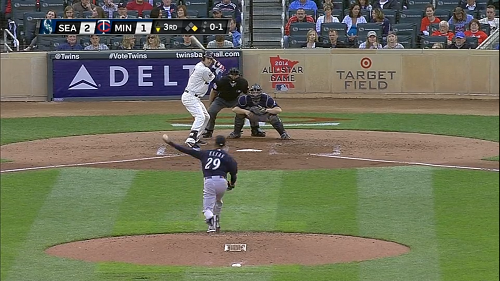
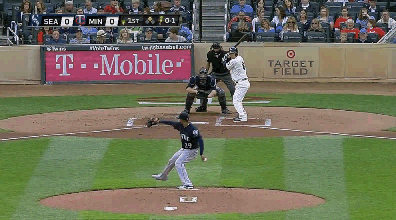
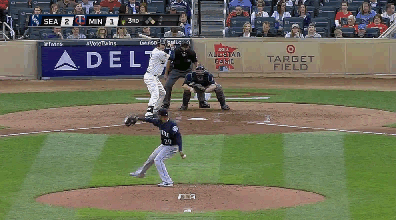
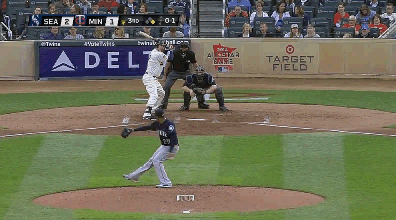
Interesting and well-written read, Jeff. Thanks for assembling this analysis of Elias’ tendencies. To me, he’s surely one of the more intriguing story lines this season.
Three Jeff posts in two days. Yay.
And agree that Elias is about the most interesting story of the 2014 Mariners.
Why doesn’t he have ace upside? I’m not disputing what you say, I’d just like to hear why you think he doesn’t.
His walk rate, for one, is still way too high. Fangraphs has him on pace for roughly 3 wins over a full season right now, which is good, but aces usually push higher than that.
Still, 3 wins is nothing to sneeze at.
Great post. Some additional benefits:
I showed this to our lefties: the three videos showing them the nearly straight right leg anchor just after release.
As well, very nicely, it shows how his right foot steps straight forward in a line directed between the plate and the inside corner of the batter’s box (I was going to say batters’ feet, but the lefties are standing mid box, where Suzuki is tighter in).
But what’s interesting is how against lefties, regardless of high or low, his right foot remains flat on delivery, whereas against Suzuki he not only rolls slightly over on the right side of his foot, but pivots to the right on that heel, accompanied by a deeper body lean, where for the lefties he remains more upright. I’ve often witnessed that sort of extra compression with righties against lefties as well, which I’m convinced has always been an instinctive compensation against throwing wide — and if it doesn’t come instinctively it’s worth teaching.
Elias and James Jones are the best Mariners stories so far this season.
Roenimania!
Actually fun fact!
I think we can be better judges of his upside once he’s played say even half a season? Especially since fans and writers alike have said over and over that they didn’t know who he was until right before season started. Let the man be great!
It’s difficult to overstate how grim the back end of the rotation situation would have been if we hadn’t managed to find a solidly average+ starter unexpectedly lying around.